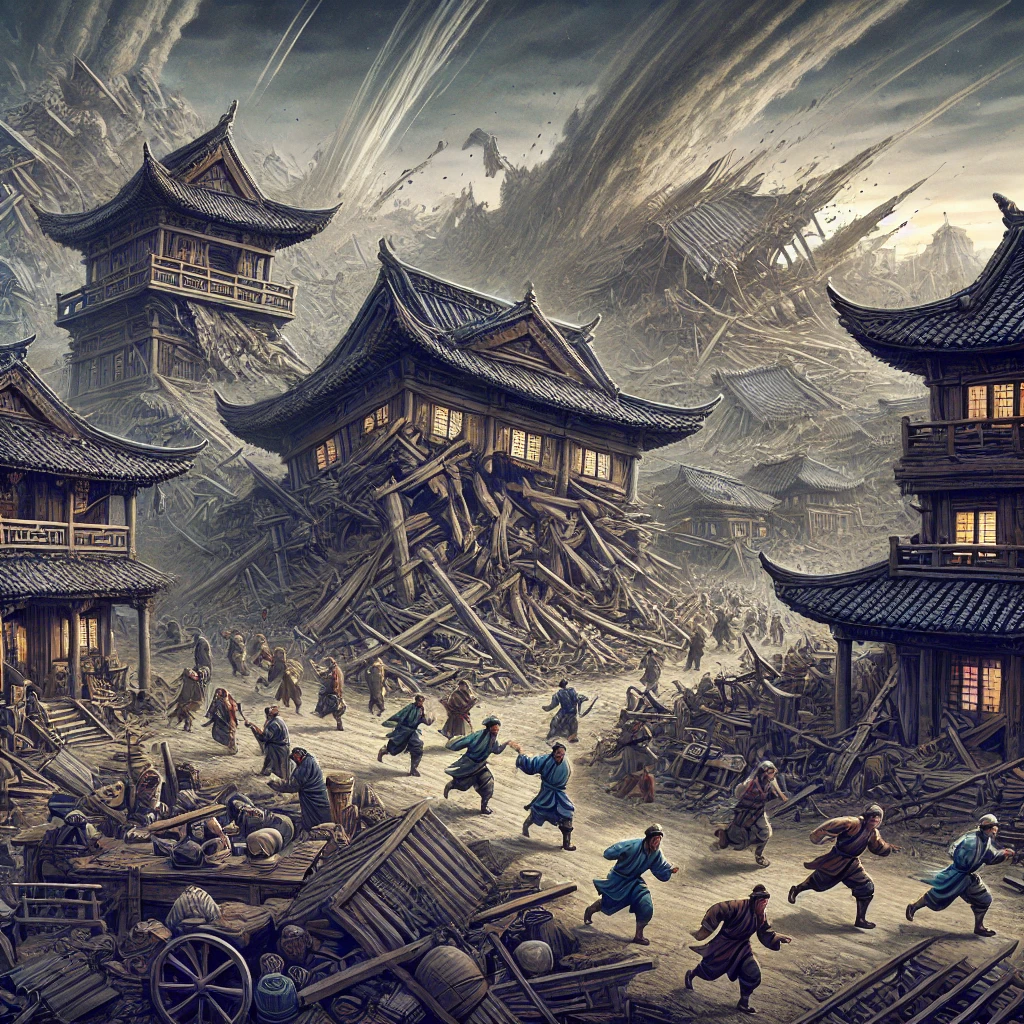On January 23rd, 1556, one of the deadliest earthquakes in recorded history struck Shaanxi, China, devastating the region and claiming the lives of an estimated 830,000 people. Known as the Jiajing Earthquake, named after the reigning emperor of the Ming Dynasty, the event reshaped the landscape and profoundly altered the course of Chinese history. With a magnitude estimated at 8.0 on the Richter scale, the earthquake’s destruction was compounded by the densely populated region and fragile architectural practices of the time.

The epicenter of the earthquake was in the Wei River Valley, an area renowned for its fertile lands and strategic importance. However, the tragedy was not confined to Shaanxi alone; neighboring provinces, including Shanxi, Henan, Gansu, and Hebei, also suffered significant losses. The disaster highlighted the vulnerability of human settlements to natural calamities and the critical need for disaster preparedness, a lesson that resonates even today.
Significance in Historical Context
The Shaanxi Earthquake’s devastating impact stemmed from a combination of natural and human factors. Many of the victims lived in yaodongs, traditional cave dwellings carved into the region’s loess soil. While these structures were practical and efficient under normal conditions, they proved deadly during the earthquake, as the unstable loess collapsed, burying entire families alive.
The event underscored the fragile balance between humans and their environment, prompting early Chinese scholars to document the disaster in meticulous detail. These records provided valuable insights into the earthquake’s intensity, geographic spread, and aftershocks. The disaster also influenced Chinese philosophy and governance, as leaders sought to interpret the calamity as a sign of divine displeasure, spurring reforms and increased attention to public welfare.
Lasting Impact and Lessons Learned

The Shaanxi Earthquake left an indelible mark on Chinese society and urban planning. In the centuries that followed, advancements were made in architectural practices to mitigate the effects of earthquakes. More robust building materials and techniques were developed, particularly in regions prone to seismic activity.
On a global scale, the Shaanxi Earthquake remains a pivotal case study for seismologists and historians alike. It serves as a somber reminder of the devastating potential of natural disasters and the importance of understanding the interplay between geology and human habitation. Modern seismic risk assessments and early warning systems owe much to the lessons learned from such historical events.
The tragedy also underscores the importance of community resilience. Despite the overwhelming loss, survivors rebuilt their lives and cities, laying the foundation for the enduring cultural and economic significance of the Shaanxi region. Their resilience serves as an inspiration for communities worldwide facing the challenges of natural disasters today.
Remembering the Past, Preparing for the Future

As we reflect on the Shaanxi Earthquake, it is crucial to recognize its role in shaping both historical and contemporary approaches to disaster management. The event not only reshaped the physical landscape of central China but also left a profound psychological and cultural legacy.
Today, the Shaanxi Earthquake is remembered as a powerful example of humanity’s vulnerability to nature’s forces and the enduring need for preparedness and innovation. By studying this historic tragedy, we honor the lives lost and strive to build a safer, more resilient future for generations to come.
